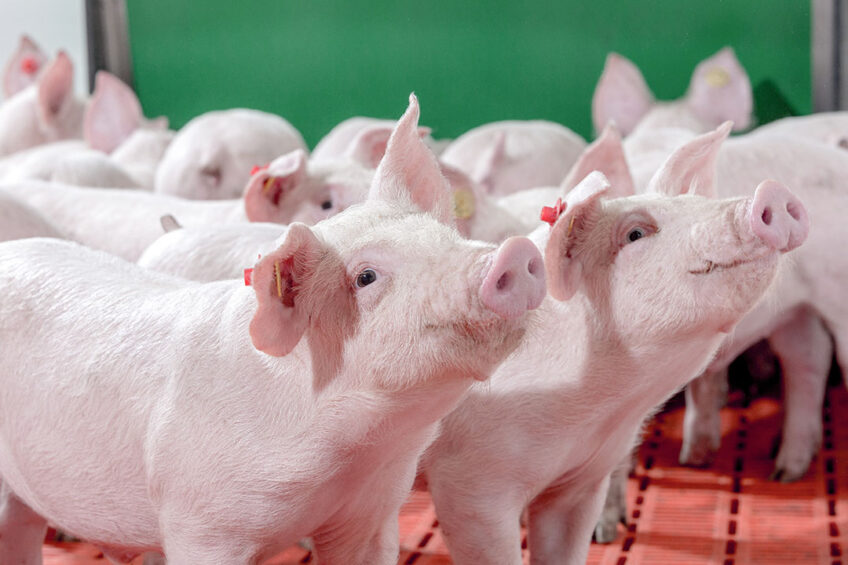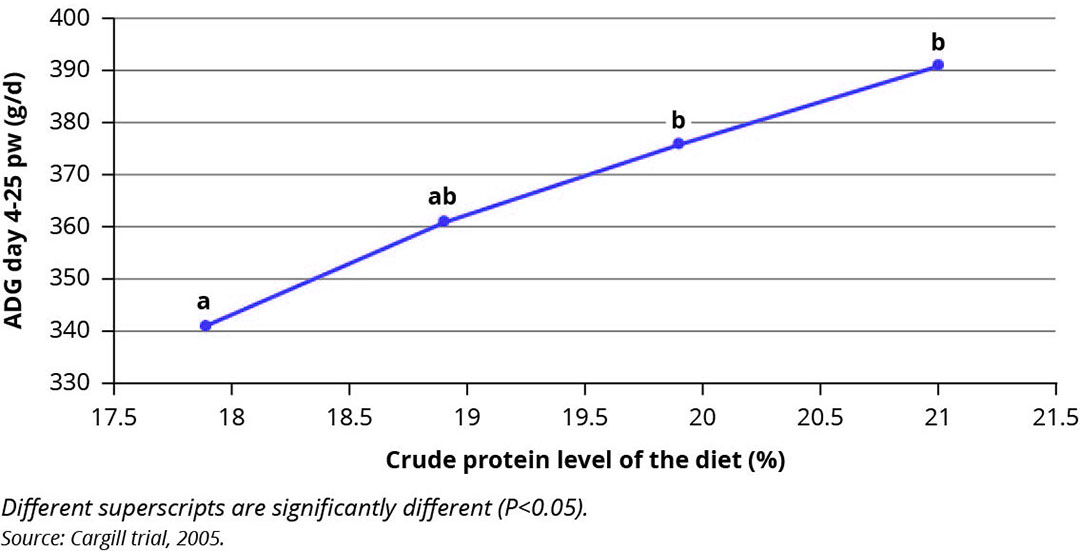Protein revaluation: Key to healthier weaner diets

How can we maintain piglet performance, when losing traditional solutions such as antibiotics and therapeutic zinc oxide? A good start would be to improve protein digestibility and piglet vitality. Applying a feed concept with 4 strong pillars can do this.
Implementing a change in feeding and eliminating traditional solutions is particularly challenging for weaning piglets. The changes in physical and social environment around weaning, combined with an underdeveloped gastrointestinal tract, often lead to digestive issues such as post-weaning diarrhoea (PWD), followed by loss in performance and profitability. The culprit of intestinal problems is often a combination of undigested protein and proliferation of pathogenic bacteria in the hind gut and inflammation of the intestinal wall. For a long time, antibiotics and therapeutic zinc oxide (ZnO) were used to control these digestive issues in pigs. However, antibiotics as growth promoters have been banned in Europe for many years already and therapeutic ZnO levels will be soon.
The quest for protein balance
The quest is to find the optimum crude protein (CP) level that limits digestive problems and – at the same time – maintains high performance levels. CP levels have a direct impact on average daily gain (ADG) (Figure 1). However, the definition of what is a “high” or “low” protein diet for this group varies worldwide. While 18.5% is considered as a low protein inclusion in many American markets, it is usually defined as high in Europe. Controversy only grows by literally interpreting publications that compare weaning diets of above 21% crude protein (CP) versus below 17%. A 16% CP diet will have a lower risk for developing digestive disorders, compared to a 22% CP diet. The risk of formulating on the safe side (16%) is that these diets don’t allow an optimised amino acid pattern, resulting in lower gut development and certainly a lower performance.
Figure 1 – Effect of increasing CP levels in the weaner diet on ADG

Better digestible protein
To help pig farmers deal with the challenges around weaning, Cargill has developed Neopigg Shield (hereafter called ‘shield programme’). It is specially designed for healthy optimal growth performance while reducing the reliance on antibiotics and therapeutic ZnO. The shield programme is a multi-phase feeding concept that is tailored according to the needs of the piglets in the transition (6-8/10 kg body weight) and starter phase (10-25/30kg) and for a specific farm profile. The programme is based on having a CP level that is closer to the requirements and a mix of health and immune promoting ingredients in the diet that allows piglets to maintain their growth. One may be hesitant to use high protein diets for sensitive weaning pigs, and worry about a drop in performance, feed intake and a rise in digestive issues or other diseases. Diets with higher CP are possible when a specific nutrient such Swine Gut Fermentable Protein is used to formulate for young animals. The shield programme utilises a special soy protein with a very high and fast protein digestibility through a thermo mechanical treatment, ensuring growth performances without representing a risk for the hindgut and consecutive scoring. Higher levels of CP will also increase the supply of limiting amino acids, which promote immunity and gut development. The shield programme specifically takes into account these non-synthetic available essential amino acids and optimal ratios needed for growth and health. Leucine is an excellent example, its level is connected to gut integrity (mucin production) and together with isoleucine plays an important role in keeping technical performance around weaning.
Management of the mucus layer
Making sure the protein and amino acids levels are adequate is the basis for healthy growth and thus the cornerstone of the shield programme. But when the gut wall is damaged or infected, nutrients will still not be absorbed adequately. The microbiome and gut layer also contribute to the mucosal integrity of the intestine, which is of great importance to the health of the host. The shield programme is therefore built on 4 pillars to have a true holistic approach:
- Protein digestion
- Mucin effect
- Immune regulation
- Intestinal flora.
All these 4 elements can be positively influenced by nutrition and together form a great shield of protection during the weaning period. And this starts with the intestinal wall. This first line of protection is covered with a dense layer of mucus. This ‘slimy’ natural layer consists of a complex network of glycoprotein such as mucin. The diet and the microbiota have a strong interaction with this layer and can make or break it. A damaged mucus layer can lead to infection and inflammation. The shield programme includes special processed carbohydrates that positively influence the body’s own mucin production. In addition, antioxidants are included to avoid cell damage and essential oils and yeast products to ensure a healthy gut development and integrity and colonisation of beneficial microbes in the gut, reducing the chance for pathogens to create disorders. This way, we can use nutrition as an effective tool to strengthen the barrier of the intestinal wall post-weaning when the gut is most vulnerable.
Figure 2 – New weaning feed concept reduces antibiotics (L), while keeping ADG high (R).

Reduction of group medication
The effect on weaner performance from the shield programme has been confirmed in over 50 trials, involving over 50,000 piglets. Key results include reduction in therapeutic ZnO and group medication of antibiotics, stable manure score, up to 14% improvement on ADG, and Feed Conversion Ratio (FCR) of less than 1.5 between weaning and 70 days of age. Data from trials involving 7,160 piglets showed an average of 86% reduction in animal daily dose (ADD) of antibiotics, without compromising on health and performance, compared to averages and benchmark figures (Figure 2). These data confirm that using higher CP levels do not increase PWD.
Key to success lies in revaluation
Producing post-weaning feeds is challenging, especially in the post antibiotic and post therapeutic ZnO era. The key lies in revaluation of protein levels, increasing protein digestibility and providing shield protection for weaner pigs to maintain gut integrity and a strong immune system. Formulating weaner diets on the safe side, with low protein levels, is something from the past. Let’s formulate diets with protein levels according to what the piglet really needs and thrives on. Performance and safety can go together.
 Beheer
Beheer





 WP Admin
WP Admin  Bewerk bericht
Bewerk bericht